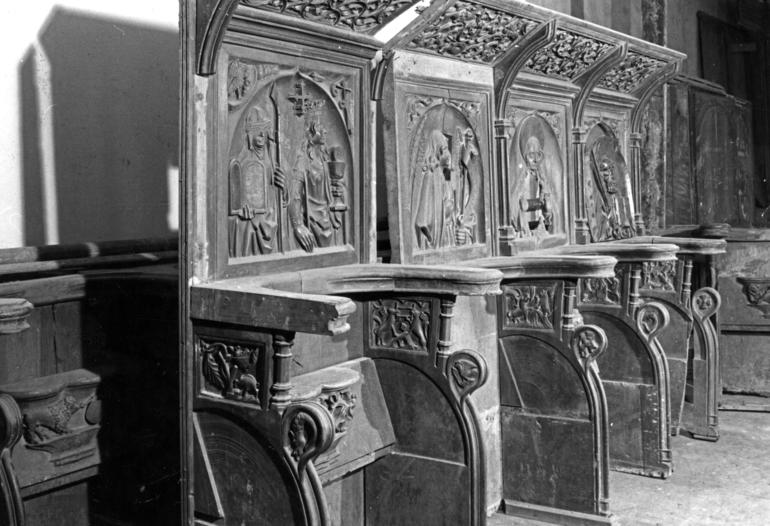
Conservation Projects
World Monuments Fund has been privileged to work in collaboration with local partners in Spain to safeguard and advocate for the preservation of this rich heritage. The earliest projects developed by WMF in collaboration with these local partners were started in the late 1970s, including the conservation of the Ochavo Chapel at Toledo Cathedral, the restoration of the High Gothic choir stalls at Oviedo Cathedral, and the rehabilitation of the San Francisco el Real de la Coria Convent in Trujillo. Since then, WMF has carried out over 25 projects located in 11 of the country’s 17 autonomous communities. While the size and goal of each project have varied, WMF has always emphasized the need for local engagement and appreciation of each site in trying to raise awareness of its necessary protection and maintenance.
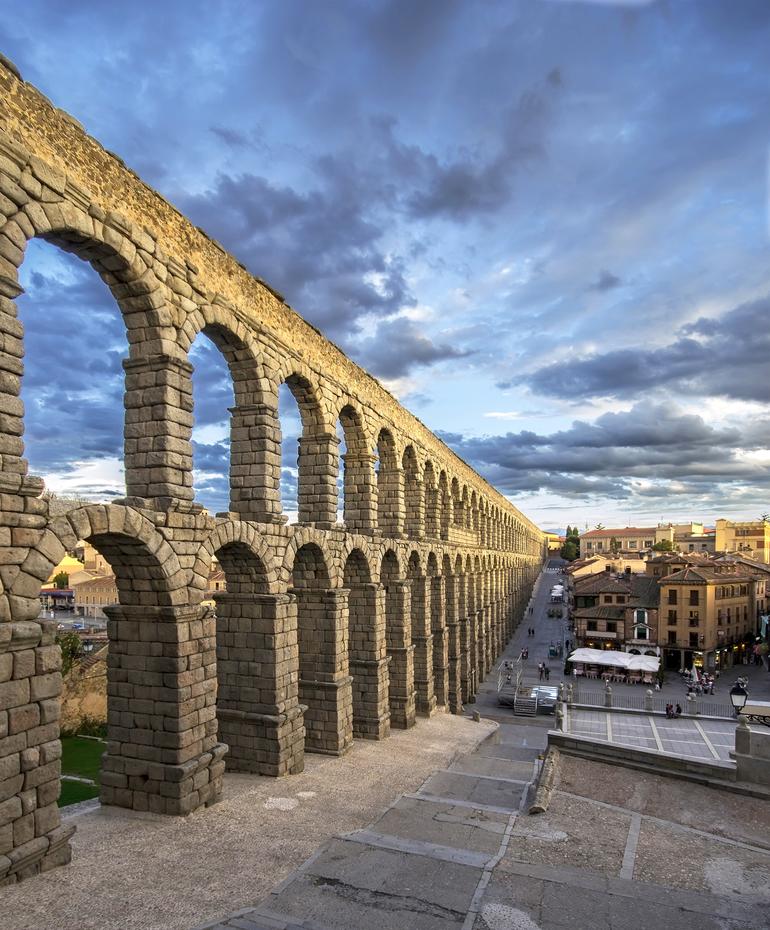
Heritage Advocacy
Since the creation of the World Monuments Watch—WMF’s main advocacy program—in 1996, seventeen Spanish sites have been included, ranging from small buildings in remote locations to World Heritage sites, historic landscapes of entire cities to vernacular architecture. While some Watch sites eventually became WMF field projects, inclusion on the Watch has provided opportunities to review the threats to cultural heritage sites and develop strategies to assist in advancing sustainable solutions through local engagement.
As founding sponsor of the World Monuments Watch, American Express has worked with us for over 20 years to preserve cultural heritage. An unwavering supporter of World Monuments Fund and our mission to safeguard the most treasured landmarks around the globe, American Express has helped preserve over 154 sites in 70 countries. In Spain, American Express has contributed over $1 million dollars to 8 conservation projects at some of the country’s most iconic sites.
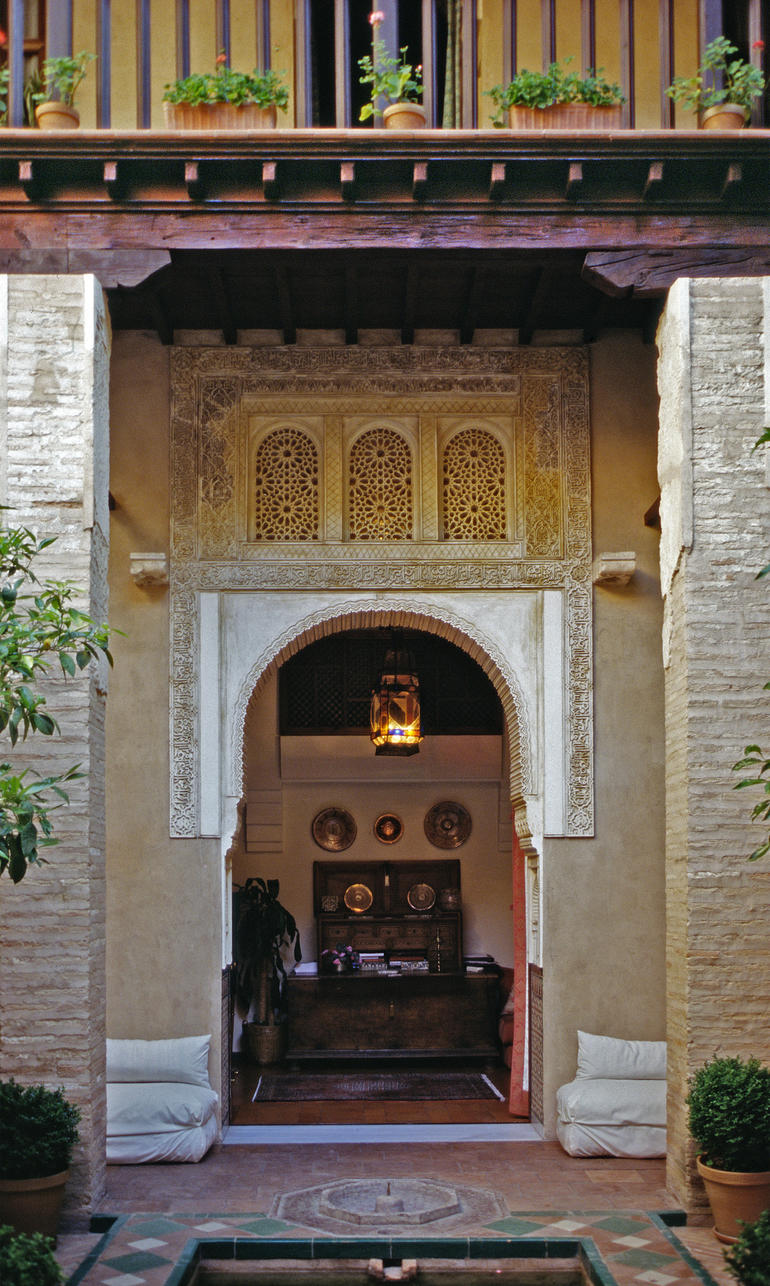
Moorish Houses of Granada
The neighborhood of the Albayzín, a World Heritage site since 1994, boasts an ensemble of Moorish houses that have survived mostly intact for more than five centuries. The delicate quarter facing the iconic Alhambra requires periodic maintenance and is continually threatened by real estate pressures and gentrification.
In 1996, ten of the Moorish Houses of the Albayzín were included on the inaugural World Monuments Watch to draw attention to the conservation needs of the historic ensemble. With funds from American Express, WMF supported a pilot restoration of one of the houses, while giving technical assistance in the restoration of the remaining nine houses. The project allowed for the installation of an Islamic art museum in the restored house and encouraged other homeowners to invest in the Albayzín.
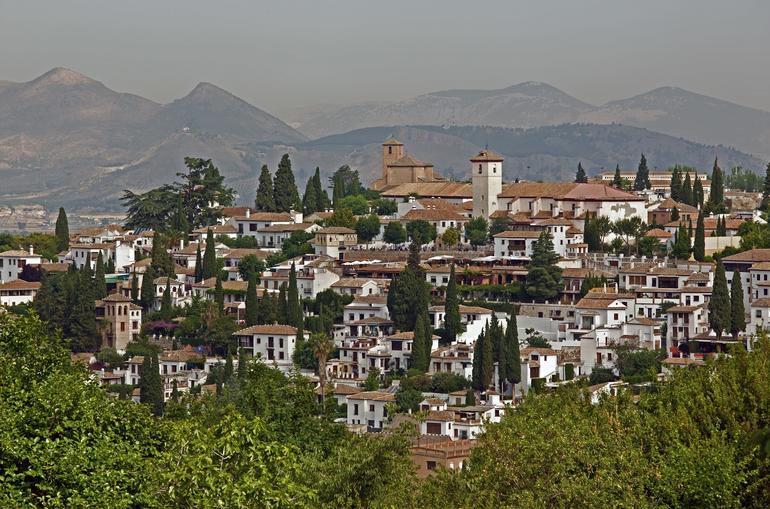
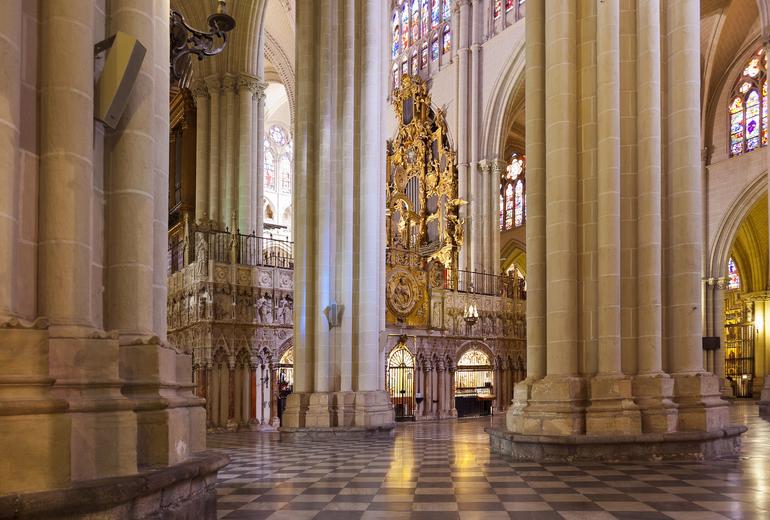
Toledo Cathedral
The Toledo Cathedral, one of the main buildings within the Historic City of Toledo World Heritage Site, contains an invaluable collection of art. In the late 1970s, WMF contributed to the restoration of many of these treasures during the restoration of the Ochavo Chapel, WMF’s first project in Spain. The chapel was converted into a museum, which features the church’s most important pieces, including the famed gilded Monstrance of Arfe, also restored.
In 2003 WMF worked to preserve the fourteenth-century mural paintings of the Chapel of San Blas, seriously affected by water infiltration. The restoration allowed for the reopening of the chapel after several decades of being inaccessible.
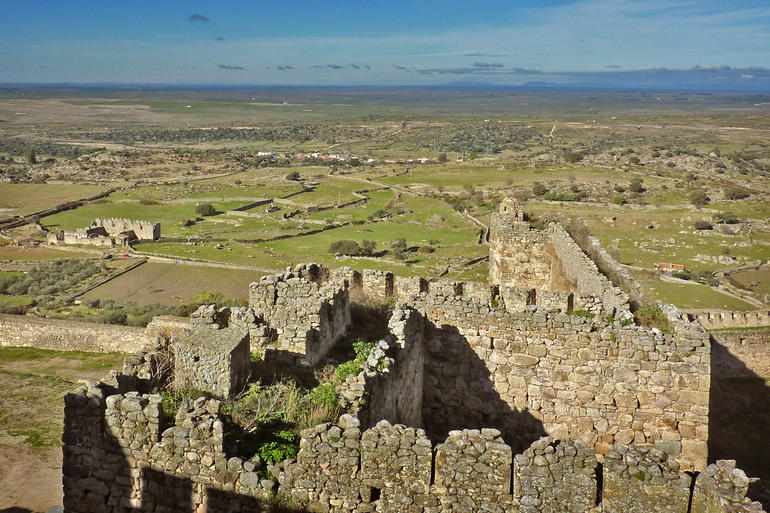
Berrocal of Trujillo
The Berrocal of Trujillo, a series of granitic hills surrounding the historic town, is an example of how sustainable development and green energy may sometimes collide with the preservation of cultural and historic landscapes. Faced with a plan to extend a solar farm into the site that could have terribly damaged the integrity of this historic landscape, the Berrocal was included on the 2014 Watch to promote greater dialogue about how to balance preservation and sustainability.
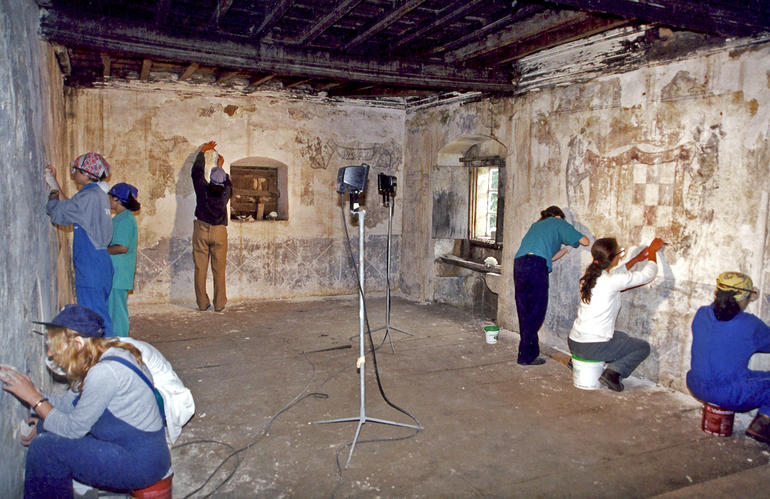
Pazo de San Miguel das Penas
This remote pazo (Galician manor house) contains one of the most significant Renaissance mural paintings ensembles in the region and the only surviving example of scrafitto decoration in the province that could be dated as back as to the Swabian kingdom in the sixth century. Years of humidity, inadequate maintenance, and vandalism were threatening the murals and scrafitto decoration. The manor house was included on the 2004 Watch in order to raise awareness about its neglected state.
In a collaborative effort with American Express and Fundación Casa Ducal de Medinaceli, WMF initiated a conservation project that included photographic documentation and surface cleaning of the mural paintings and scrafitto decoration, and the repair of the roof of the main building to prevent further leaking problems.
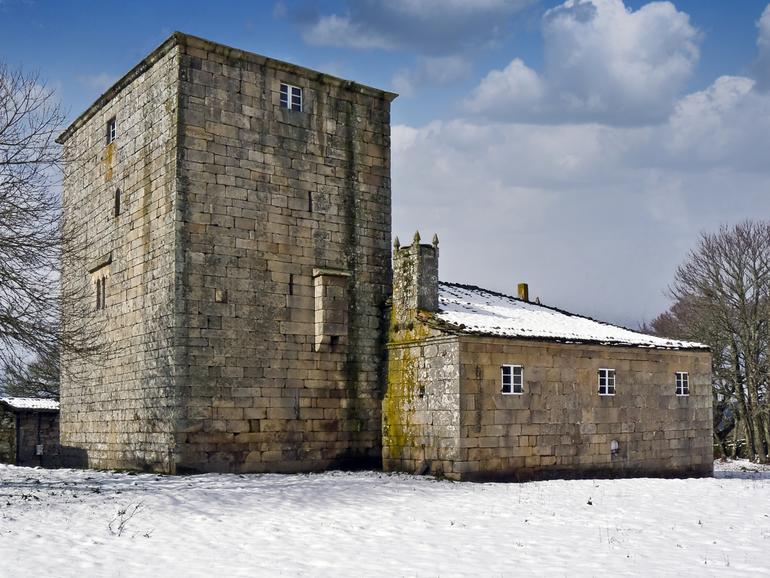
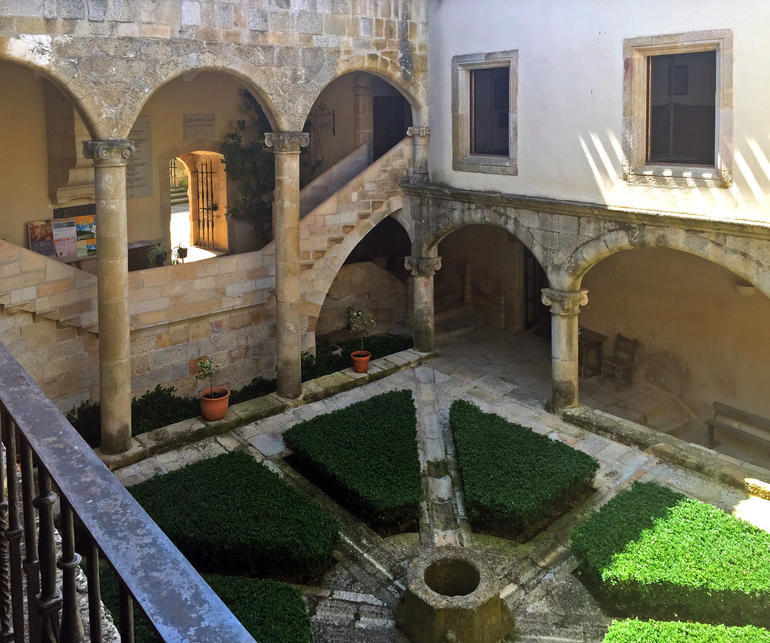
Convento de la Coria
The convent of San Francisco El Real de la Coria was built in the fifteenth century by the Loaisa family. A symbol of a prosperous era in Trujillo, the convent was steadily enriched during the next three centuries by other aristocratic families, but was ransacked by French troops during the Peninsular War (1808-1814), and consequently abandoned. In the late 1970s, the Fundación Xavier de Salas started to restore the building, using many of the thousands of original stone elements that were found at the site.
WMF became involved in 1981, collaborating in the reconstruction of the monument. The convent was once again opened to the public in 1987, although restoration and conservation works continued until 2000.

Barrio del Cabanyal-Canyamelar
This historic coastal settlement in Valencia boasts buildings from the nineteenth and twentieth centuries designed using an eclectic approach—their styles ranging from historicist to modernist and later rationalist designs. The site’s inclusion on the 2012 Watch was a catalyst for renewed local advocacy in preventing the municipal project that would have destroyed large sections of the historic neighborhood and caused the displacement of many families and businesses.
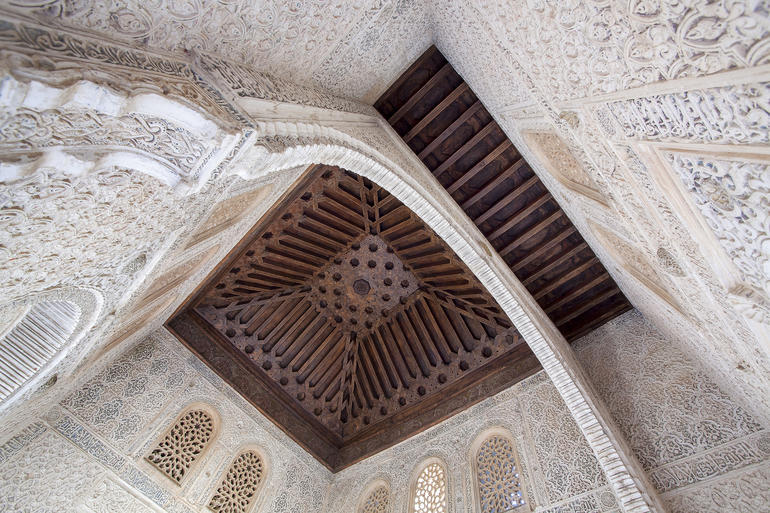
Alhambra
Spain’s most iconic site, the Alhambra, is an exceptional expression of Moorish and Andalusian culture, able to convey the history of the changes to the region over time through its architecture and decorative campaigns. The Oratotio del Partal was built during the reign of Sultan Yusuf I (1333-1354) as a chapel. Along with the Partal Arab houses on the opposite side of the portico as well as the House of Astasio, they form a group of buildings originally associated with the running of the Palace of the Partal, an important section of the Alhambra complex.
Thanks to American Express, WMF, along with the Patronato de la Alhambra and several public institutions, worked on the conservation of the chapel’s lavishly decorated Mudéjar wooden ceiling.
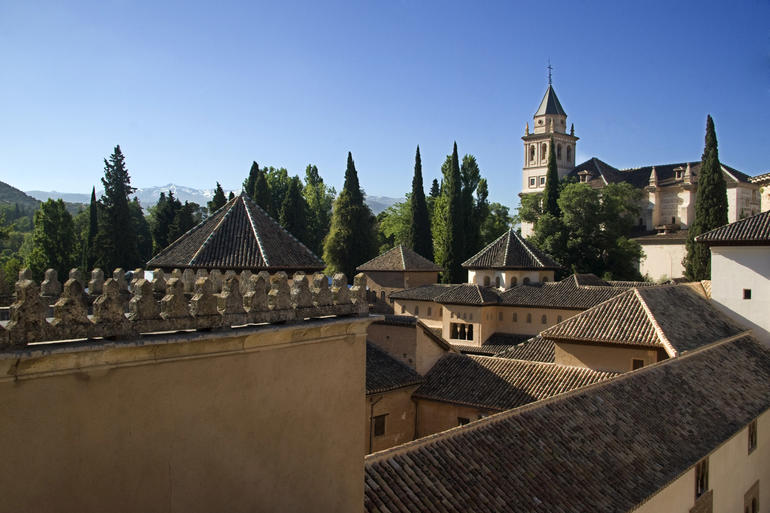
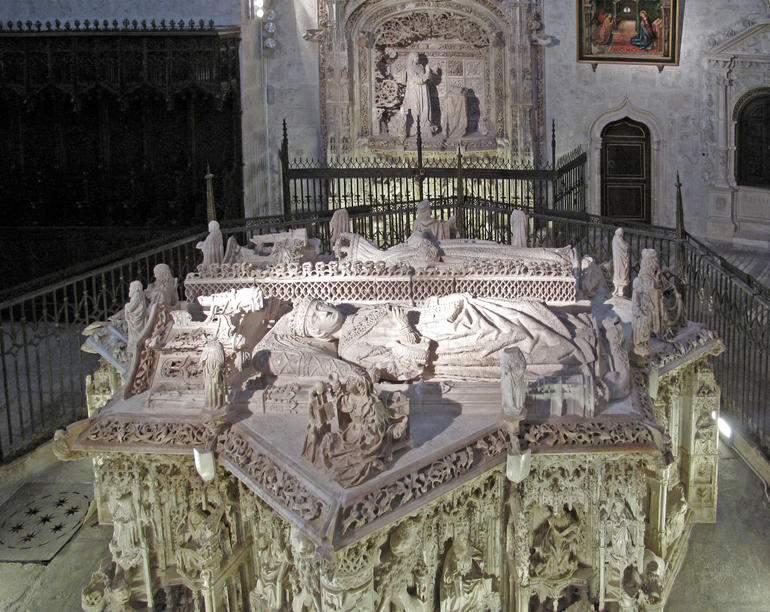
Cartuja de Santa Maria de Miraflores
The Cartuja de Santa María de Miraflores in Burgos, a charterhouse built mostly between 1454 and 1488, is one of the most impressive Gothic architecture ensembles in Spain, and it includes some of the most celebrated Spanish Gothic works of art, such as the altar and alabaster sepulchers by sculptor Gil de Siloé.
From 2006 to 2010 WMF supported the restoration of some of these masterpieces, including the church’s western façade, main altar, mausoleums and sanctuary screen. WMF also partnered with the Metropolitan Museum of Art’s Cloisters in New York City to reproduce an alabaster statue of St. James which was originally sculpted for the charterhouse’s church. The replica was given to the monks in 2010 and it has been on display since.
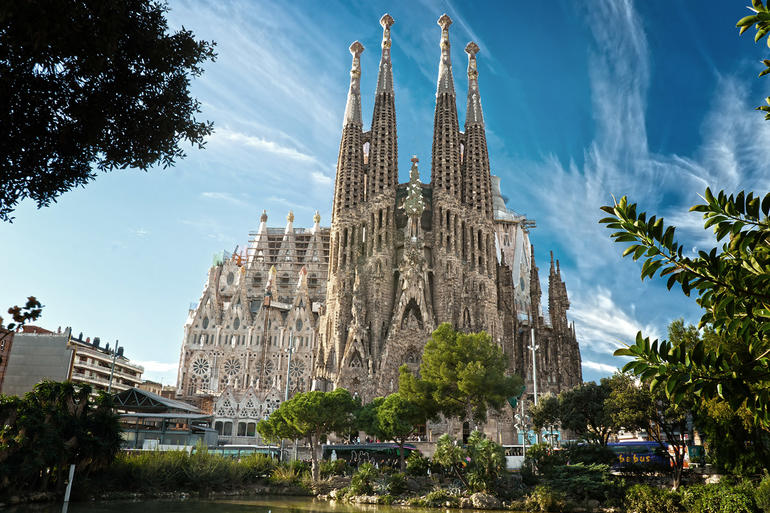
Expiatori Chuch of The Sagrada Familia
One of Antonio Gaudí’s finest and most famous works, the Sagrada Familia was threatened by the construction of an underground train tunnel when it was included on the 2010 Watch.
Due to the controversy, in June 2010 the Spanish Congress halted the project until UNESCO could make a recommendation about it. After examining the site, UNESCO backed the tunnel but instructed that the utmost caution should be taken during construction, making sure to not disturb the site. The tunnel was finally inaugurated in January, 2013.
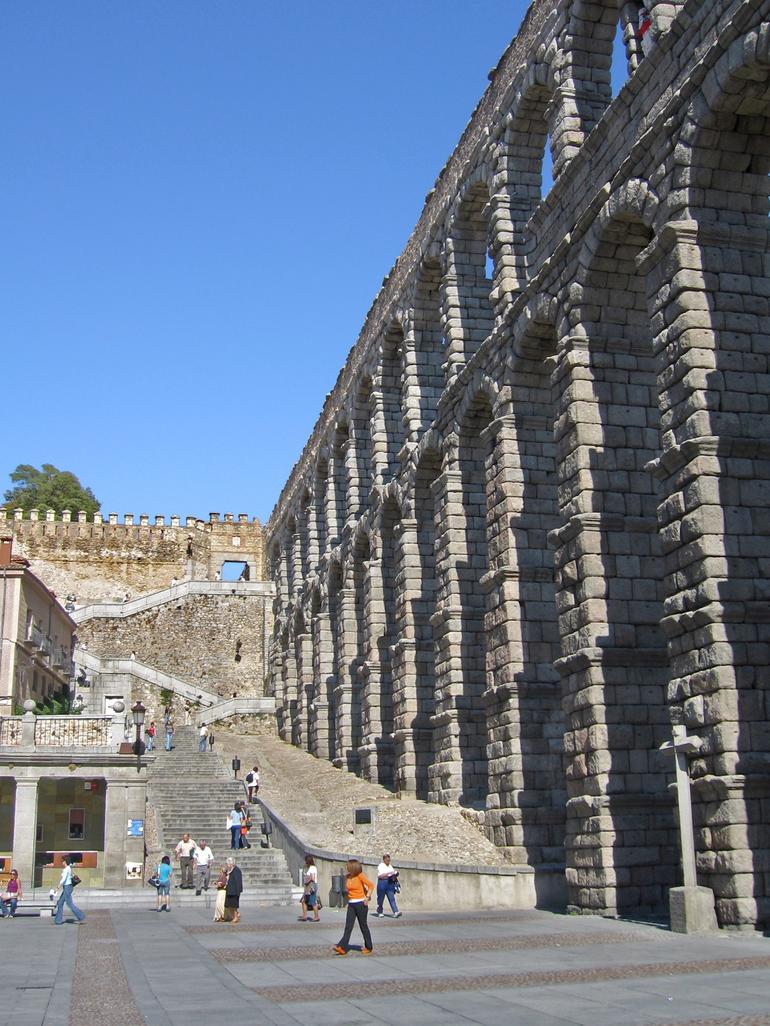
Segovia Aqueduct
The Roman aqueduct of Segovia, a World Heritage Site since 1985, is one of the most intact of its kind in Europe. A characteristic feature of the landscape of Castilla y León, the 2,000 year old structure also requires periodic maintenance. Despite conservation works in the 1990s, the aqueduct was included on the 2006 Watch to highlight the concern over the lack of upkeep of a lead canal installed to allow water to flow again atop of the aqueduct, which was creating leaking problems throughout the structure.
Through the support from American Express, WMF carried out a comprehensive, multiyear study of the aqueduct, and developed a complete conservation management plan for the monument and the surrounding landscape.
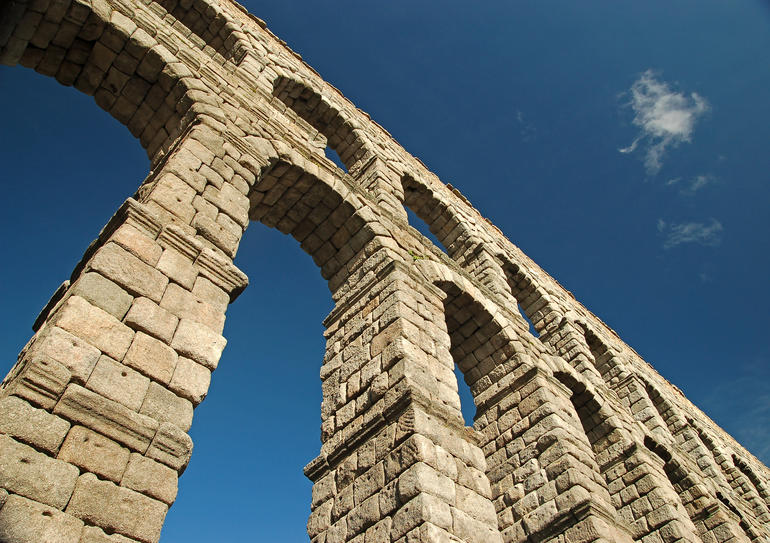
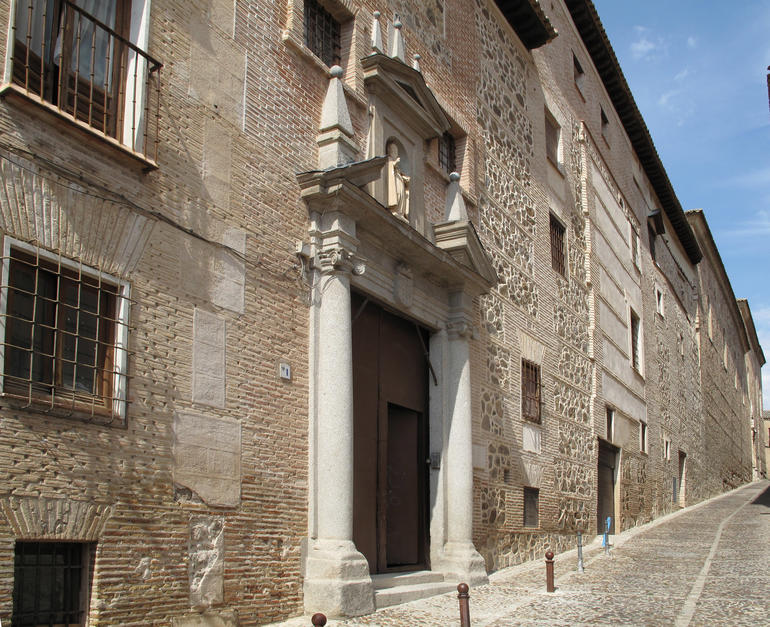
San Clemente Convent
The Convent of San Clemente, located within the Historic City of Toledo—a World Heritage Site since 1986—was founded in 1131 by King Alfonso VII and completely redesigned in the sixteenth century by several noted architects, including Covarrubias, del Corral, and Nicolás Vergara “el Mozo.” Damaged during the Spanish Civil War (1936-1939), the convent is still partly occupied by a cloistered community of nuns, who struggle to preserve it.
In 2009, WMF partnered with Toledo’s City Council to restore the chapterhouse, addressing the extraordinary but deteriorated mural paintings, wooden ceiling, and decorative tile work. During the restoration, an unknown ensemble of eleventh century mural paintings were uncovered and eventually restored by WMF in 2010.
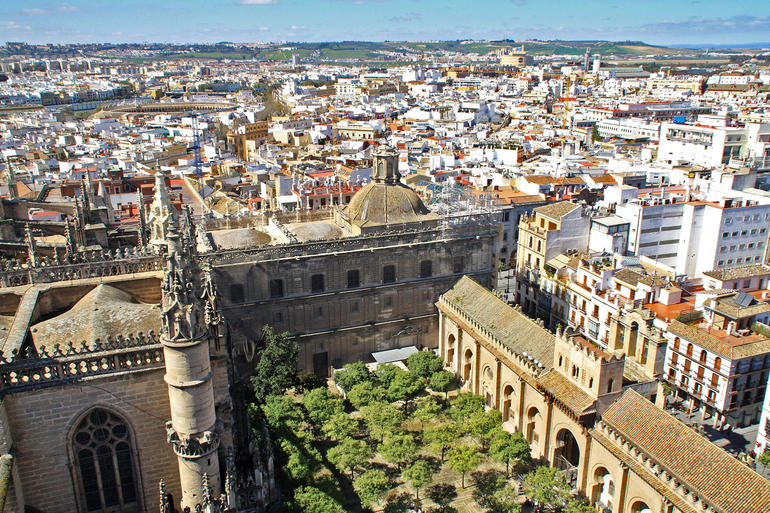
Historic Landscape of Seville
The historic landscape of Seville was included on the 2010 Watch to call international attention to the construction of the CajaSol Tower—known as the Pelli Tower after its architect, Cesar Pelli—that would change the historic cityscape of one of the oldest cities in Spain. WMF’s opinion was soon backed by UNESCO and the Spanish National Committee of ICOMOS but, over the protests of dozens of experts, the city council decided to allow for the construction of the tower. Construction of the tower finished in May 2015.
Although the new tower has irretrievably changed some of the most iconic vistas of the city, the controversy over the whole construction forced the city council to ban the construction of any new tower near the historic core of Seville.
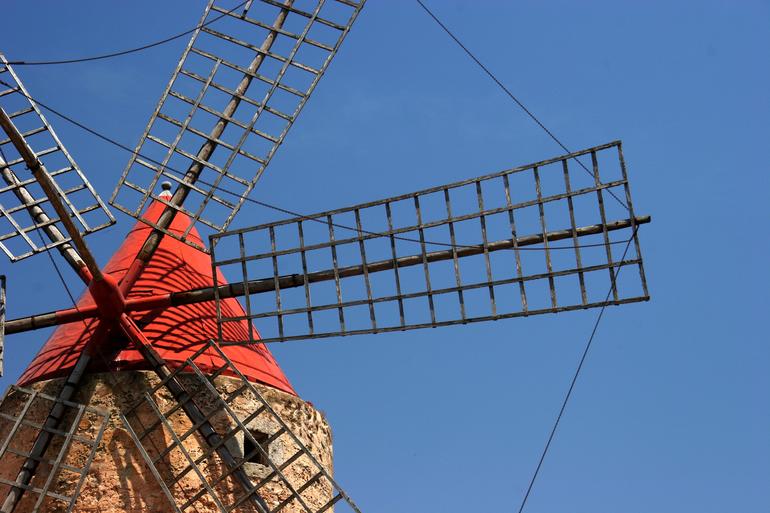
Windmills of Mallorca
The windmills of Mallorca were included on the 1998 Watch to support local organizations fighting for the preservation of this vernacular heritage. At that time, it was estimated that around 200 windmills had been lost due to real estate pressure, neglect, and vandalism, but there were still 700 windmills dating from the sixteenth to the nineteenth centuries, symbols of the former prosperity of Mallorca.
In collaboration with the “Amigos de los Molinos” association, and with funds from American Express, WMF restored the Molí d’en Garleta windmill to allow for the installation of a museum of the windmills. Since then, several windmills have been restored both by private and public institutions, but a complete catalog of the existing windmills is still needed.
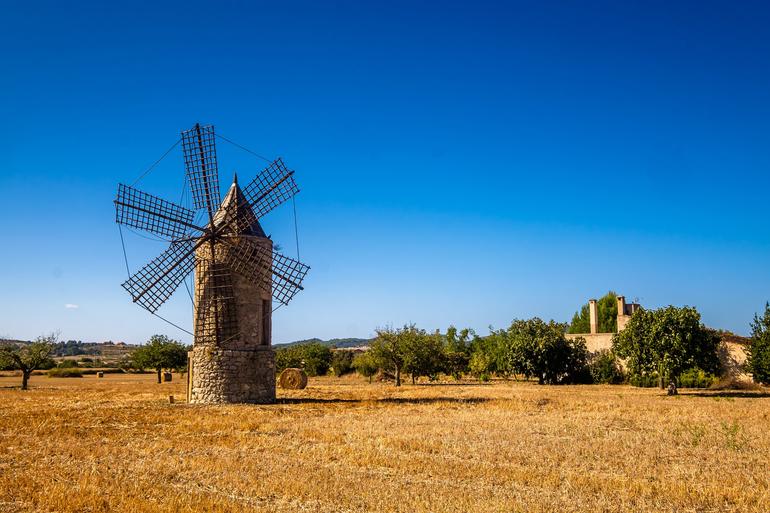
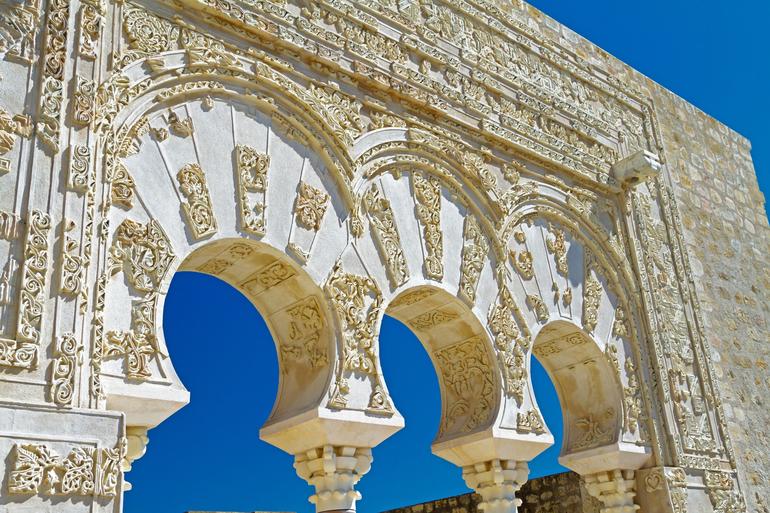
Salón Rico of the Medina Azahara Palace
The Islamic city of Medina Azahara was commissioned by Abd-ar-Rahman III, Umayyad Caliph of Cordoba, in the middle of the tenth century. The city was sacked at the beginning of the eleventh century and consequently abandoned until its rediscovery in 1910. Although a small portion of the city has been uncovered so far, it is considered one of the most unique and important complexes of early Islamic architecture in Spain.
Beginning in 2011, WMF supported the painstaking restoration of the delicate stone carvings in the walls of the Salón Rico—the main reception room in the palace of Abd-ar-Rhaman III— correcting previous failed restorations and improving the environmental conditions of the room to ensure its long-term survival.
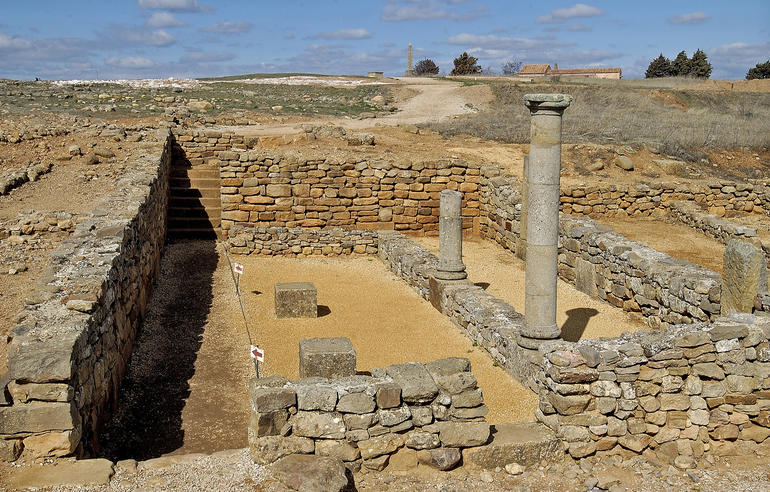
Numancia Archaeological Site
This Celtiberian settlement, which resisted a Roman siege in the mid-second century and was declared a National Monument in 1882, has been threatened by the plans of construction of an industrial park for almost a decade. Numancia Archaeological Site was included on the 2010 Watch and soon after its inclusion, court decisions halted construction of the industrial park due to illegal expropriation.
Although these court decisions were in fact upheld in 2013 by the Supreme and Constitutional Courts of Spain, the regional government decided to continue the project, reducing its size from 560 to 150 hectares. Local advocates have rallied against the new plan, which would still damage this fragile historic landscape. The project has been halted pending a final sentence.
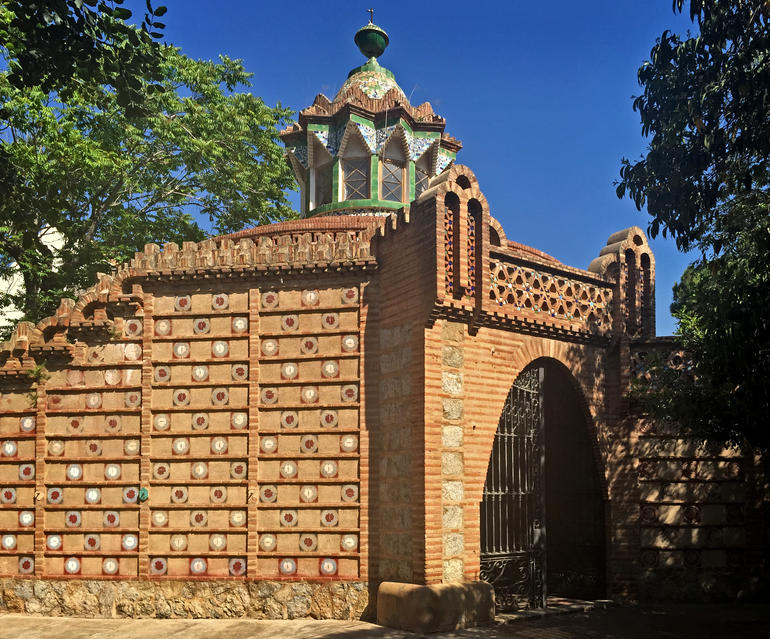
Güell Pavilions and Garden
One of Antoni Gaudí’s earliest works, the Güell Pavilions and Garden were designed at the behest of Eusebi Güell, who would become the young architect's most important patron, and were built between 1883 and 1887. They were included on the 2014 Watch to call attention to the urgent need of restoration in order to be safely reopened to the public.
Through the support of American Express, WMF and the University of Barcelona carried out the conservation of the wrought-iron gate and the conversion of the adjacent gatekeeper's lodge into a visitor center with exhibits on this and other lesser-known Gaudí works in Barcelona.
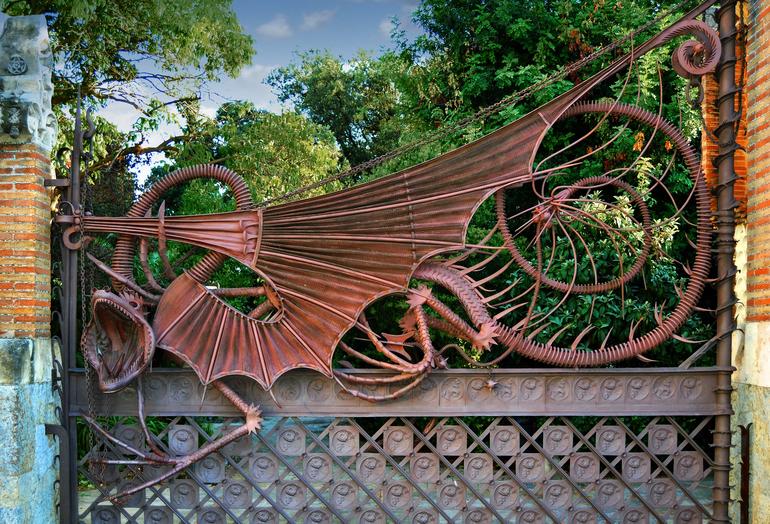
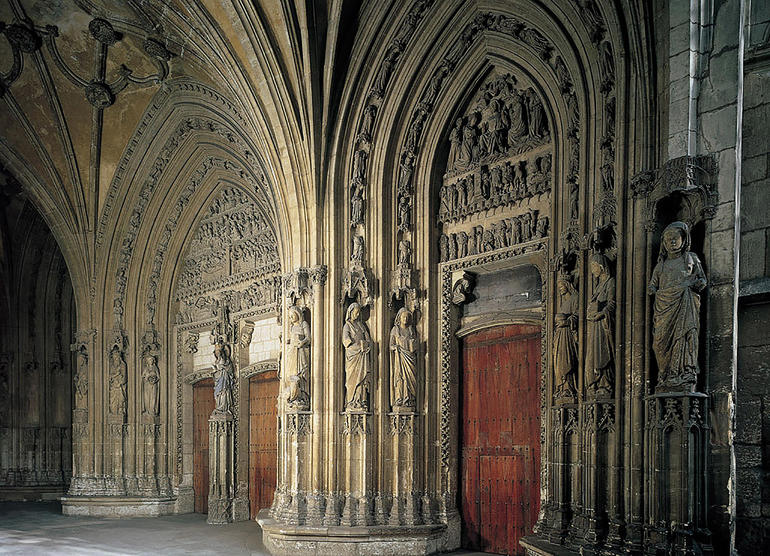
Santa Maria de Vitoria Cathedral
At the Cathedral of Vitoria, WMF took part in the pioneering “Open for Restoration” program, allowing public access to the site throughout the project. The cathedral, known as Gasteizko Katedrala in Basque, was built in the twelfth century and later expanded in the thirteenth and fifteenth centuries, with smaller alterations carried out in the temple until the nineteenth century. Structural problems and a failed restoration in the 1960s led to the closure of the church in 1994.
In 2003, WMF contributed to the reopening of the three exterior portals of the cathedral, which had been sealed since the eighteenth century, the installation of a transparent gateway, and the monumental illumination of the portico.
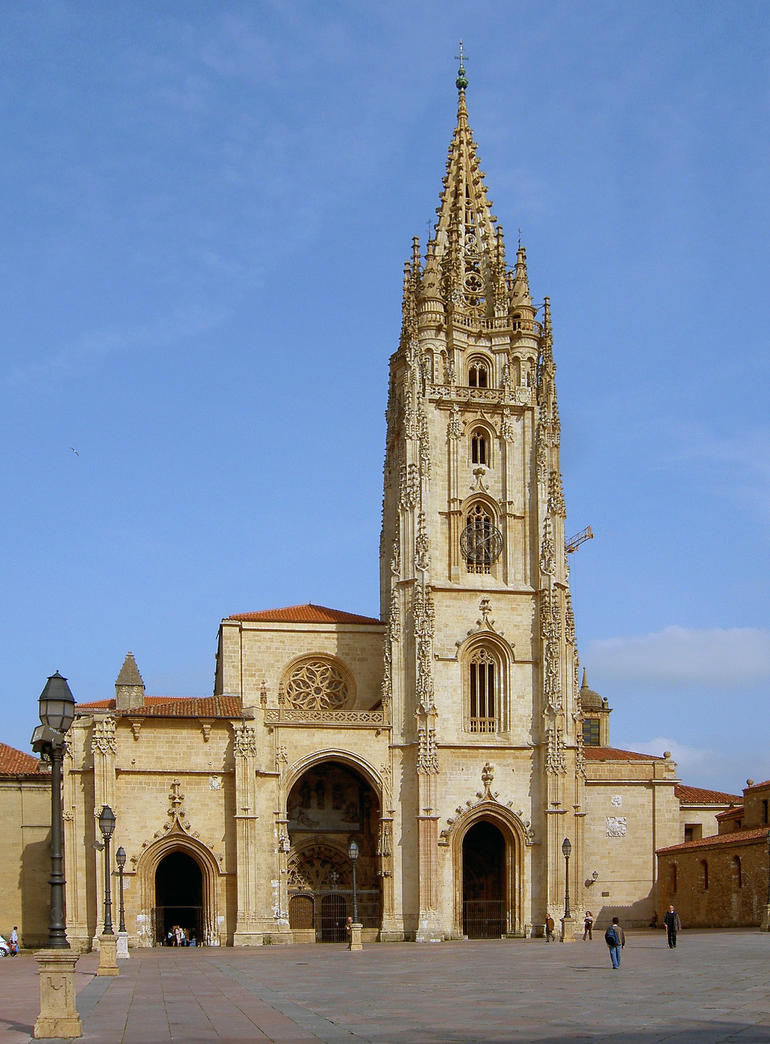
Oviedo Cathedral
The imposing Cathedral in Oviedo has long been an important pilgrimage destination, and a World Heritage Site since 1998. Inside, the Gothic choir stalls—considered among the finest in the country—were thought to have been lost to a firebomb during the Asturian miners’ strike of 1934. In 1976, two American historians found them hidden in the attic of the cathedral. Although they were in very poor condition, it was still possible to appreciate the incredible level of detail of the carvings in the choirs stalls, where many secular characters were represented, depicting a complete panorama of life in medieval time.
With WMF’s help, the choir stalls were carefully restored between 1979 and 1982, and successfully re-installed in the capitulary hall of the cathedral.
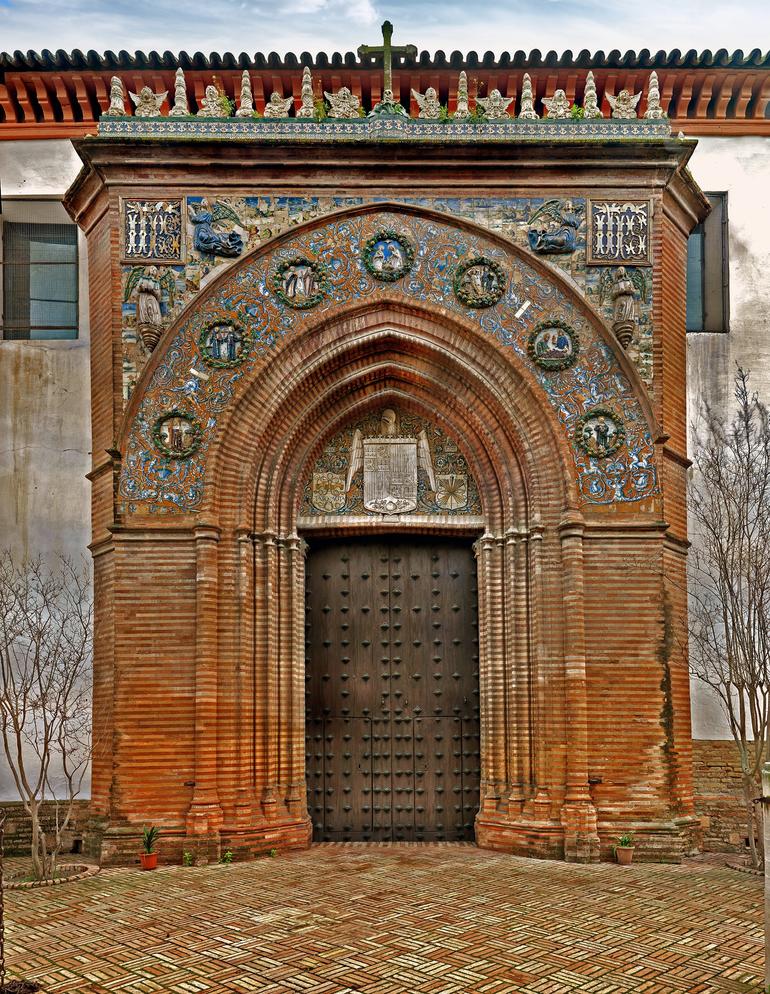
Monastery of Santa Paula
One of the dozens of cloistered convents that were originally built throughout Seville, Santa Paula has been continuously occupied for over five centuries. Facing a dwindling monastic vocation which poses a serious challenge to the safekeeping of these historic buildings, the convent of Santa Paula has opened parts of the complex to the public as a museum with a permanent art collection.
WMF and the Instituto Andaluz del Patrimonio Histórico supported the restoration of the gothic brick-and-tile portal at the entrance to the church, a unique design that combines Gothic and Mudéjar style with Renaissance elements. The portal designed by Pedro Millán and Francisco Niculoso Pisano in 1504, had been affected by erosion, moisture, and biological growth.
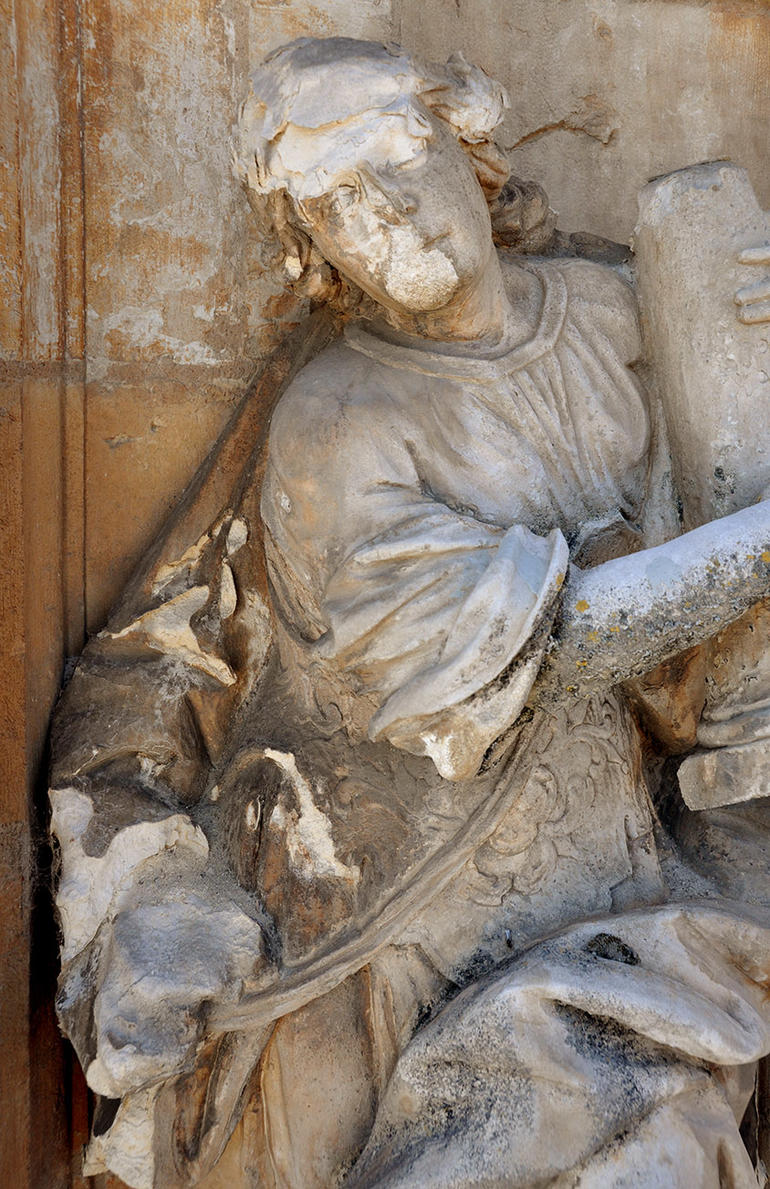
Parador de León
The Monastery-Hospital of San Marcos in León, known today as Parador de León, is one of the most iconic Plateresque (Spanish Renaissance) buildings in the country. Originally built as a monastery hospital in the early sixteenth century, the complex served many functions, including as a prison during the Spanish Civil War, before its conversion to a parador (a state-run hotel). For over 500 years, the masonry ashlars and sculptures that form the façade were exposed to weathering and moisture, while inadequate maintenance and repairs exacerbated the natural aging of the building. In 2013, after heavy rainfall, one of the gargoyles detached from the façade and plummeted to the public plaza below, prompting an emergency assessment of the masonry.
In a partnership with the Instituto de Turismo de España, WMF Spain, and American Express, WMF is implementing a project to restore and protect the building’s façade and ensure its long-term conservation.
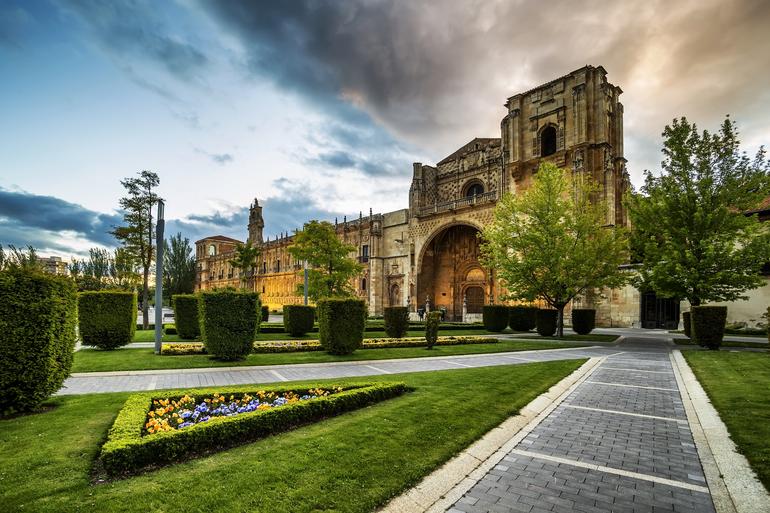
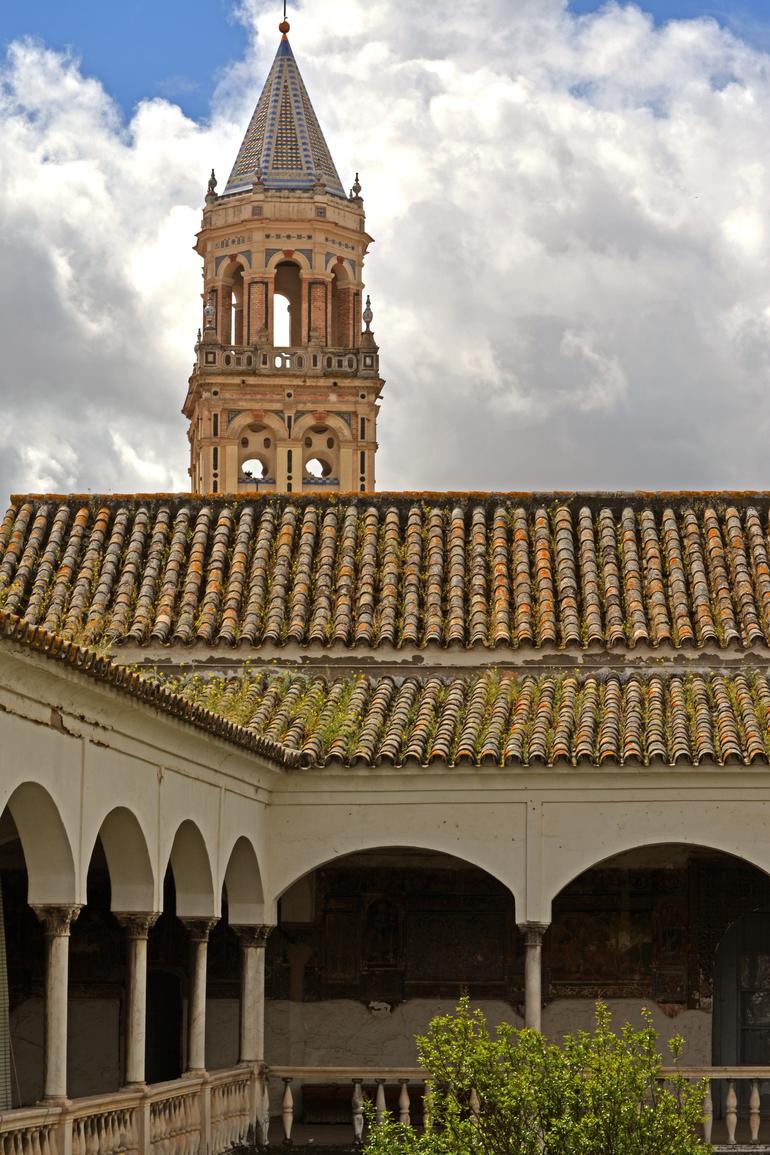
Convents of Seville
For centuries, the cloistered convents of Seville have been deeply ingrained in the life of the historic city, bearing witness to the long evolution of the urban fabric and the city’s communities. Challenged by the decline in the numbers of monastic communities and in the means available to maintain them, some convents have opened areas for public use and programming, allowing them to generate economic resources to sustain their conservation and upkeep.
The convents of Seville were included on the 2016 Watch to bring attention to the challenges they face and the need to manage change to ensure the long-term survival of this rich heritage. Through an award from American Express, WMF is collaborating with the city’s tourism office and the Instituto Andalúz de Patrimonio Histórico to create a printed guidebook highlighting the convents’ historic and artistic importance. At the Convent of Santa Inés, a fourteenth-century convent for Franciscan nuns, work will be carried out to allow partial public use of the space.
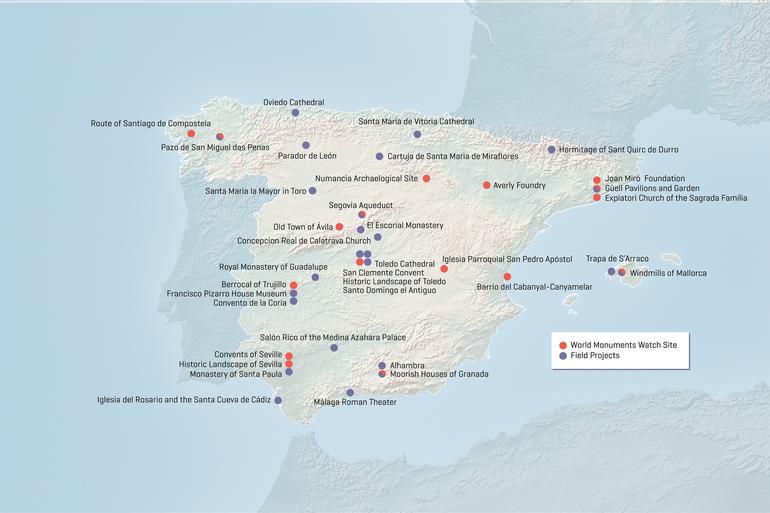
WMF’s long history of conservation projects in Spain has been possible thanks to our local partners and generous donors such as American Express. Our commitment to the country’s heritage began shortly after the Franco dictatorship ended, and was strengthened in 1992, when our affiliate, World Monuments Fund Spain, was established. Through our activities at these heritage sites, our hope is that at the conclusion of each project, the public has the opportunity to better understand how a historic site enriches the lives of the local communities and visitors. Explore all WMF projects in Spain.

